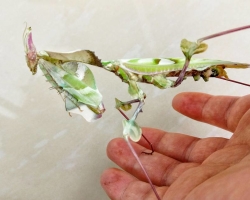How can a nutritious vegetable be distinguished from fodder? From this article you will find out which one is the most useful for eating.
Content
Beats are the oldest plant, one of the most common that is eaten not only by people, but animals. Sugar is also made from beets.
- This plant differs in its species not only externally, but also in purpose.
- Technical crops are used in animal husbandry, a dining room in the cook.
- What are the types of sugar beets? What distinctive features does she have on external signs? You will find answers to these questions in this article.
What is the difference between sugar beets and fodder visually: comparison, photo

At first, a wild was inhaled. People consumed only leaves, and the fruit recognized the fruit useless and tasteless. In the 16th century, beets were bred, which began to be consumed in cooking, and the stern for feeding cows and goats.
Then the sugar view of this vegetable appeared, and sugar began to be obtained from it. After centuries -old cultivation, several types of this fetus appeared by breeders. There are currently 4 types of beets. Here is a visual difference, comparison and photo:
Canteen -It has a lot of betaine, because of which the fruit is red. Therefore, it is used to prepare different dishes in cosmetology. The fruit of this type of beets is bright red, rounded. When it grows, the root is not visible from the ground, only the leaves. The tops are thick, the leaves are large.

Fodder - It is used to feed livestock, which gives milk. Thanks to this diet, milk yield increases and the winter lack of vitamins is replenished. The fruit is light pink. When such a beetle grows, its root root rises above the ground. The tops are thick, but small leaves.

Sugar - This is a vegetable with good carbohydrate indicators, sugar is made from it. Cake, which remains after the squeeze of the pulp goes to livestock feed. The root is white, with growth-half visible from the ground. The tops are sparse, the leaves are plain and thin.

Leaf (manhold) - grown for use as a feed for cows and goats. The leaves of this type of beet in food are actively used, since they have a lot of protein. It is not recommended to eat root. The root system is not visible with growth. The leaves are beautiful, large, green, with red or yellow veins.

Each type of beet has its own purpose. But each of them has been actively used by a person for many centuries.
What is the difference between sugar beets from the usual, fodder in chemical composition: comparison

All types of this vegetable differ not only externally, on the principle of growth, but also in chemical composition. Chemical and nutritional value are the main indicators that attention is drawn to when using this fetus. Comparison of the differences in sugar beets from ordinary, fodder in chemical composition:
- Sugar content in root crop: in sugar-up to 20%, feed-1-3%, dining room-11-12%. Sugar accumulation is due to special vascular fibers, which are not in the fodder beets, and in a small amount there is a dining room fruit.
- Protein in large quantities is contained in fodder varieties - up to 9 grams. In sweet species, it is not enough - from 0.12 grams in the aft beets and in the usual one - 1.7 grams.
- More carbohydrates in sugar root crop - up to 20 grams in 100 gram beets. Feed varieties-5-8 grams.
In sugar, in addition to sucrose, a lot of fructose, glucose, galactose and arabinoses. These are complex carbohydrates for which any product is appreciated. Therefore, beets are considered a useful and nutritious fruit, with indispensable trace elements and other substances.







